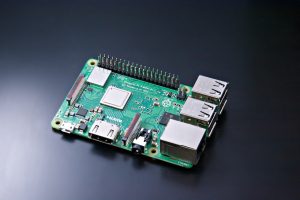There are many types of robot grippers, but the four most common are hydraulic grippers, vacuum grippers, pneumatic grippers, and electric grippers. And each type of robotic gripper has its own unique advantages and disadvantages in different industries.
On this page, we will be going over some of the most popular types of robot grippers so you can choose the right one for your project
Types of Robot Grippers
- Vacuum Grippers
- Pneumatic Grippers
- Electric Grippers
- Hydraulic Grippers
Vacuum Grippers
Vacuum grippers are commonly made up of an array of suction cups. An air pump creates an air-tight seal between the suction cups and any flat surface they come into contact with, creating suction that removes all the air inside. This creates a pressure difference with the atmosphere (14psi), which allows these types of robot grippers to scale up to lift moderately heavy items with ease.
This type of gripper also helps prevent damage to fragile objects because there’s no pressure on them while being lifted. And a popular use for vacuum grippers is in lifting boxes because their flat surfaces are well suited for this type of end effector.
Pneumatic Grippers
Pneumatic robot grippers are designed to help automate the process of picking up and moving small or large objects. They use compressed air to open and close their jaws or fingers, which usually come in either 2-finger configurations for smaller components or 3-finger designs for larger objects.
Two-finger pneumatic grippers are well suited for applications that require grasping and dexterity whereas three-fingered robots can pick up more weight.
The great advantage of this type of robot gripper is that pneumatic grippers are relatively inexpensive to make, while still being able to exert a moderate grip force.
The downside of this type though is their limited grasping strength, and their need for high-pressure air pumps and hundreds of feed of pneumatic air hoses.
Electric Grippers
If you have an application where you can’t risk dropping or damaging an object then an electric robot gripper might be the best solution for your needs. They’re perfect if you need to handle fragile parts or work with small items without breaking them during assembly operations.
In addition, because electric robot grippers do not have any hydraulics involved there is no risk of oil leaks from damaged seals or other components which could cause contamination in your product line.
While they don’t offer the same level of gripping power as hydraulic grippers, electric robotic grippers are suitable for applications that require minimal actuation delay and light to moderate gripping force.
Hydraulic Grippers
Hydraulic Grippers are the best option for gripping large objects in an industrial setting. They’re simple and easy to install, requiring only one power source and some plumbing.
However, hydraulic grippers have several drawbacks. First off, they can be prone to leaks over time which leads to breakdowns that can be expensive to fix.
Secondly, they need high-pressure pumps and plumbing which adds complexity when installing them in new facilities or retrofitting old ones where piping may not exist.
Finally, there is the issue of how much space you have available for them. If you don’t have enough room then it will be difficult if not impossible to use hydraulics effectively without getting creative with your manufacturing space.
Different Types of Robotic Grippers
Parallel Motion Two-Jaw Gripper
Parallel Motion Two-Jaw Grippers are lightweight nimble and easy to use. This gripper can be used in many applications, including pick and place operations or assembly tasks where parts must be held by flat surfaces on the part’s edges. The 2-Jaw Gripper is available in standard electric and pneumatic versions as well as custom designs that can suit your application’s specific needs.
Three-Jaw Gripper
The Three-Jaw Gripper can be used to handle larger items that require more contact points to pick up like cylinders. A typical three-jaw gripper has jaws spaced 120 degrees apart for even application of pressure. The jaws also work together to stabilize and center items, which makes them well suited for items that aren’t aligned perfectly.
Three-Jaw Grippers can also pick up parts with either their opening or closing motion, and this type of robotic gripper can also grip the part from any direction—even upside down.
This makes it an extremely versatile machine tooling component for tasks such as loading fixtures and placing fasteners into hard-to-reach places.
Another advantage of this type of robotic gripper is that it can handle irregularly shaped parts due to its unique jaw design, which allows for a secure grip on a variety of surfaces.
Universal Gripper
The Universal Gripper is a robotic gripper that uses an elastic bladder to pick up parts. Instead of using a vacuum, or mechanical fingers like other robots, the Universal Gripper uses air pressure to grab and hold onto parts.
This unique technology allows for gripping at different levels of force depending on how much air is in the bladder. This makes universal grippers ideal for delicate items since other types of robot grippers would likely mar their surfaces when picking them up. And they can easily pick up irregularly shaped items since they dynamically conform upon contact.
Additionally, because there are no moving parts besides the bladder itself you will never have any issues with mechanical wear or failure over time.
Expanding Mandrel Gripper
Expanding Mandrel Grippers are an ingenious tool that can grasp cylindrical objects of different diameters. These grippers expand radially by forcing a wedge shape against the object’s surface while simultaneously moving linearly towards it. The result is a grip that will hold onto its target even if there are slight variations in surface tolerances.
O-Ring Gripper
O-Ting seals are used in many industries, but they are often difficult to handle with existing robotic grippers.
Standard three-jaw and parallel grippers have a limited capacity when it comes to handling O-rings. This results in damage and chipping of the seal’s surface. Also, if the diameter of an O-ring is too large or small for a particular application, then few options exist for handling these types of seals with existing equipment.
O-Ring Grippers solve these problems since they can pick up and place even very small O rings without damaging them by gently stretching them and then slipping them onto a wide range of precision parts.
Needle Gripper
Needle Grippers can pick up loose, porous, or woven materials, such as textiles, by piercing their surface with an array of sharp needles. It can be used in a wide variety of applications including picking up fibers from carpeting and clothing production, handling cloth in textile manufacturing operations, removing contaminants from surfaces prior to painting or coating processes, and collecting samples for analysis.
Multi-Finger and Adaptive Gripper
Adaptive grippers are designed for industries where the products change frequently, like package handling or assembly lines. Traditional robotic grippers can’t adapt to these changes fast enough, but multi-finger adaptive grippers can.
These adaptive grippers may provide force feedback to the controller and can also grasp irregularly shaped, soft, or spherical objects. They’re perfect for packaging lines, assembly machines, and other applications where precise control is required. And the unique design of these robotic hands makes them easy to integrate into existing systems without requiring significant changes to preexisting manufacturing processes.
Vacuum Gripper
Vacuum grippers use suction cups to lift items that are lightweight and have smooth flat surfaces. This system is perfect for lifting boxes or other flat objects. If you’re looking for a way to handle large flat items, vacuum robot grippers are a fast way to speed up bulky pick and place tasks that usually require manual labor.
Electromagnets
Electromagnets come in many different shapes and sizes including cylinders, plates, and rings which makes it easy to find one that fits your needs perfectly.
If your application requires that you hold onto ferromagnetic objects then we recommend using electromagnets instead of robotic grippers or vacuum cups.
Electrostatic Force Gripper
Electrostatic Force Grippers can be used for a variety of applications. They use very little power, so you don’t need to worry about overloading your circuits or batteries. And because electrostatic force grippers use electrostatic forces instead of mechanical ones, it is easy to adjust the gripping pressure and even lift very delicate objects that crush easily.
What is a Robot Gripper
A robotic gripper is a device used to hold, lift and move objects. It can be programmed with specific movements for each object being held or lifted.
What Is a Mechanical Gripper
A mechanical robotic gripper is a device that allows the user to grab an object, which can be stationary or moving. These devices are typically designed to provide strength and precision for industrial uses. The use of these devices has become more widespread due to recent advances in technology, including cheaper production costs. Some examples of these devices include vacuum grippers, pneumatic grippers, electric grippers, and hydraulic grippers.
A mechanical robotic gripper is a device that grabs objects by using levers and gears. It can be used to pick up just about anything, from a pencil to an egg. Robots are built with many of these devices so they can work on assembly lines or in warehouses more efficiently than humans. They also use them for medical purposes such as surgery and dentistry.
Types of Mechanical Grippers
- Two-Jaw Gripper
- Three-Jaw Gripper
- Multi-Finger and Adaptive Grippers
- Pneumatic Gripper
- Electrostatic Gripper
- Servo-electric Gripper
- Expanding Mandrel Gripper
How To Choose the Right Robotic Gripper
Robotic grippers are an essential part of a variety of different robots. In order to choose the right robotic gripper, you need to know what it’s going to be used for and who will be using it. A lot of factors need to be taken into consideration when choosing the right robotic gripper such as size, weight, material, and cost
The Differences Between Industrial Robotic Grippers and Personal Robot Grippers
Industrial robotic grippers are designed for heavy-duty use and can be used on a variety of different materials. However, as they’re not as flexible as personal robot grippers, they’re often more expensive and difficult to program.
Personal robot grips are less powerful than industrial ones but offer increased flexibility and versatility in programming. Which is best for your needs will depend on the type of tasks you’ll be performing with it.
The main difference between industrial and personal robot grips is that while both types of robot grippers work well, they have different limitations when it comes to power and usability.
The differences may seem subtle at first glance but if you need a lot of strength or require complex movements then an industrial grip might suit your needs better than a personal grade one
When Should You Use a Robotic Gripper Instead of Human Hands
When you are looking to get the most out of your production process, it is important to consider all aspects of your operation. One aspect that may be overlooked is how much time and effort your employees expend on a task. If using a robot gripper is more efficient than human hands, then this method should be considered in order to cut down on costs.
The Benefits of Using a Robot Grippers in Industries That are Dangerous or Difficult
The use of robots in industries that are difficult or dangerous has been on the rise. The benefits are many, but cost is often a major factor when it comes to making this decision. If you are in an industry that is dangerous or difficult, such as construction or mining, then deploying robots can help reduce the danger to your workers and reduce your insurance overhead.



